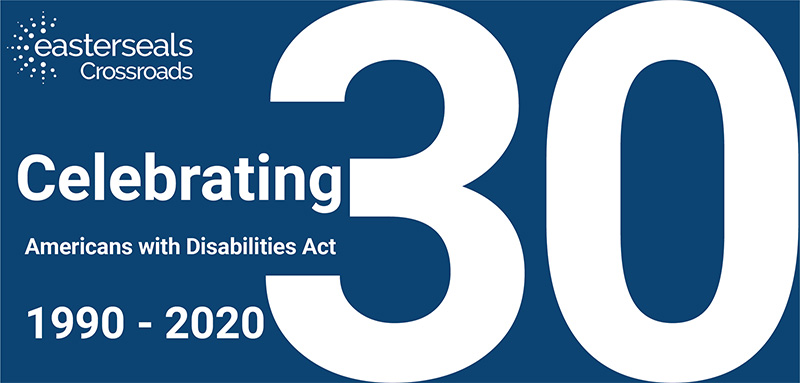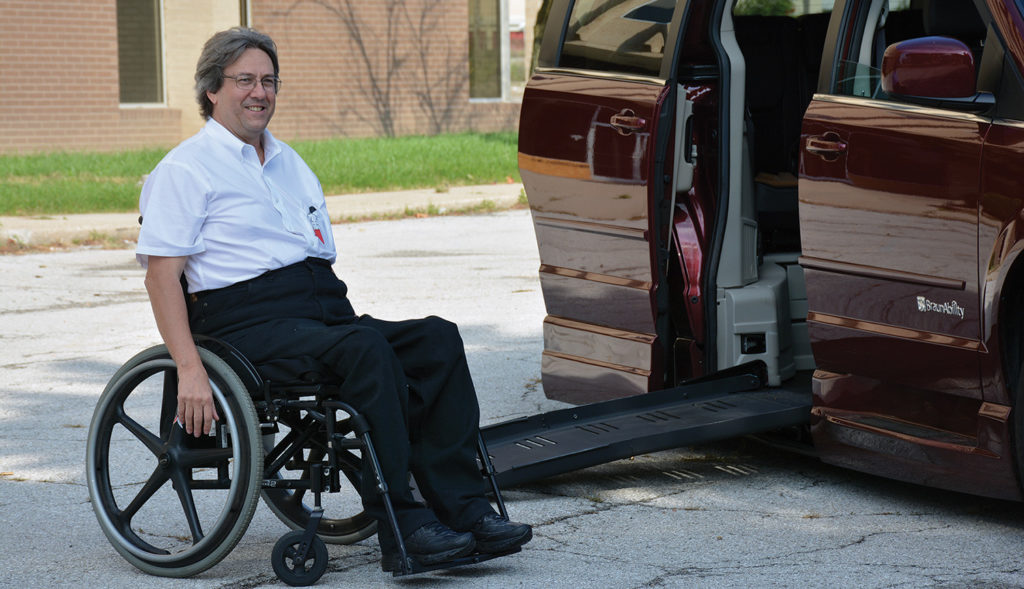
On July 26, 2020, the Americans with Disabilities Act is achieving its 30-year anniversary. This reach of this civil rights law has the ability to affect all of us at some point in our lives. According to the Centers for Disease Control, 25.6 percent of adults in the US have some type of disability; that number is consistent in Indiana at 25.5 percent.
The Americans with Disabilities Act (ADA) went into effect in 1990. This law prohibits discrimination against individuals with disabilities in all areas of public life. This includes employment, schools and transportation, as well as private and public places such as restaurants, motels and other venues that are open to everyone. Since the law went into effect, there have been significant changes, most specifically in 2008, which strengthened the law and effected change to the definition of disability.
This major legislation has made many improvements in the lives of individuals with disabilities in our country. Prior to this legislation, opportunities of daily living had great potential of denial for people with disabilities.
Meet Scott
Scott is a 64-year-old single man who lives independently. He is an active person and enjoys living in Indianapolis with all the options it provides. Scott has lived in different areas of the country, but has found that he enjoys the midwest moderate climates the best for him. Scott was in an automobile accident in 1980 that left him paralyzed from the waist down. He decided long ago to not let disability change his life, so he quickly adapted to his new way of living, learning, working and playing.
After his accident, Scott knew immediately that he needed to figure out transportation as that would be critical to his daily life. He quickly learned how to drive with hand controls so that he could get to work and around the city where he lived.

Although very recently retired, Scott worked for the majority of his career managing finances in the business offices of three different churches. After his accident, Scott knew that there would be some changes necessary for him to actually get to his work desk. For that reason, one of his first trips driving with hand controls was a visit to work so that he and his employer could determine what changes were necessary for him to return to his job.
Accessible Workplaces
Scott’s accident was prior to ADA and access to enter the building where he worked, as well as his office and desk, was not in place. His employer put in a ramp so that Scott could enter the building, modified a bathroom and raised Scott’s desk a few inches so that Scott could access it with his wheelchair. Scott’s employer and he were able to adjust to the accessibility challenges and find solutions so that Scott could continue his employment. Scott felt very fortunate that he was able to return to work within three months of a near fatal accident.
One area of adaptation that did not work out quite so well for Scott in 1980 was accessible housing after his accident. “I had to find new housing as the condo I was living in at the time was not accessible. Luckily, I was able to find an apartment that fit my needs and did not require any modifications,” said Scott.
Accessible Communities
Scott became comfortable moving around within his city, but travel to other cities provided accessibility unknowns prior to ADA. “The most glaring example of lack of accessibility within a city was my trip to New York City for a work conference towards the end of the 1980s. It seemed as though their idea of a curb cut back then was simply a worn-down curb. It was easier for me to move around in my chair out on the street with all the traffic, which was far more dangerous,” said Scott.
Access to restaurants falls under the breadth and reach of ADA as they are public and private businesses. Prior to 1990, Scott remembers going out to dinner many times with no front door access to the restaurant.
“I cannot remember the number of times when I had to enter through the kitchen of a restaurant rather than the front door. One time I had to use a freight elevator to access the dining room. I rode up that elevator with a case of lettuce on the floor right next to me,” said Scott.
Scott lived in Minnesota when ADA was passed. “Minnesota was very progressive and did an amazing job of adopting the regulations of ADA. I moved to Indiana in 1999 and found that the moderate climate here (as compared to Minnesota) was a huge advantage for me. No matter where I have lived or will live, I don’t let much stop me from doing what I want and need to do. I have never let disability change the way I want to live my life,” said Scott.
“I do remember one time where I almost had the opportunity to travel to Europe for a work conference. This was around 1990 and not much had been done in our own country with accessibility. After much discussion, my boss decided that if I attended the conference in Europe, it might end up being more about me and my accommodations as opposed to a learning opportunity. That hurt; I was disappointed, but sadly I understand the concerns,” said Scott.
Public Awareness of ADA
Thirty years later, the Americans with Disabilities Act continues to reflect our nation’s dedication to civil rights for people with disabilities, especially in consideration of accessibility. “Awareness and access are the biggest outcomes of ADA, which is great,” said Scott.
According to a report by Lex Frieden in 2015, The Impact of the ADA in American Communities, ADA has helped people gain access to public accommodations with attention to things like curb ramps, accessible parking, buses with lifts and ramps, etc.—making media more accessible with closed captioning and relay services. The ADA’s greatest impact has been improvements in access to public accommodations. Of respondents, 57 percent agree access to public accommodations, retail and commercial establishments has shown the greatest improvement since passage of the ADA.
Employment Opportunities
As for employment, it is generally agreed that people with disabilities remain a very viable and qualified talent pool, yet statistically untapped. The US Bureau of Labor Statistics reported that 19.3 percent of persons with a disability were employed in 2019. In contrast, the employment-population ratio for persons without a disability was 66.3 percent. This statistic is consistent across all educational attainment groups with unemployment rates for persons with a disability being higher than those for persons without a disability.
“I feel as though employment is still the biggest challenge and hurdle for people with disabilities in our community and our country,” said Scott.
Businesses in our community have the advantage of an employment resource in Easterseals Crossroads. Our employment division worked with 3,588 veterans and individuals with disabilities last year to gain successful employment outcomes. Learn how the employment division at Easterseals Crossroads can help you find qualified job candidates with disabilities for your open positions.



